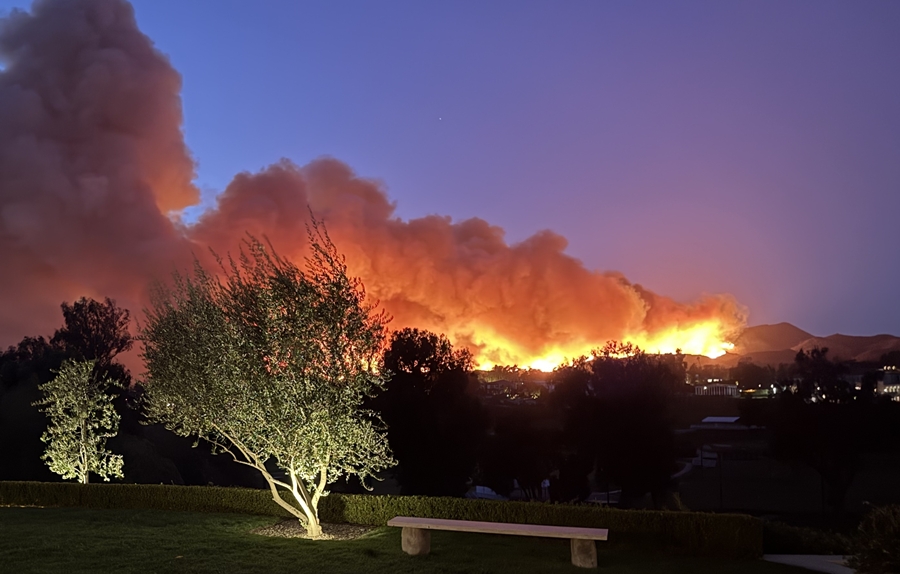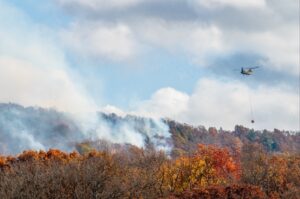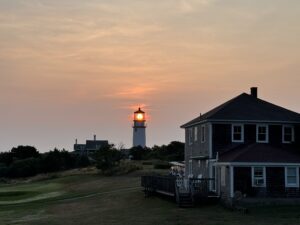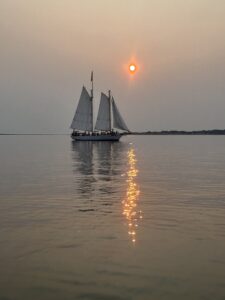PROVINCETOWN — Michela Murphy, who owns Sal’s Place in Provincetown with her mother, Siobhan Carew, landed in Los Angeles for the winter on Jan. 6 to help manage the Italian restaurant’s winter pop-up in West Hollywood.

The next day, wildfires swept through the neighborhoods of Pacific Palisades and Altadena, scorching over 40,000 acres and consuming homes, businesses, and entire communities.
By the evening of Jan. 7, intense Santa Ana winds had escalated into a deafening force that rattled the entire restaurant, Murphy recalled this week. “I thought the wind was going to blow the roof off,” she said. “It was lifting, and the fans were shaking.”
Sal’s Place began making food donations to firefighters on Jan. 9. As of last weekend, the restaurant had delivered 500 meals to firefighters in Los Angeles, aided by donations from patrons across the country.
“What we can do is feed people,” Murphy said. “That’s what we always do in an emergency.”
‘Go Bag’
Murphy is one of many Outer Cape denizens who spend winters in Southern California. The Independent spoke with nine of them, six of whom evacuated as flames drew near their neighborhoods or the air quality worsened.

Several people said they thought they were familiar with extreme weather — but that these fires were like nothing they had experienced before. They used words like “Armageddon” and “apocalyptic” to describe scenes of falling ash, bruised and yellowed skies, displaced people, and charred foundations under a red sun.
“To live on the Outer Cape for some of the year and L.A. for the other part is to know that both of these places, especially in the last several years, have seen really devastating weather,” said Jeremy Hobson, who lives part-time in Truro. On Jan. 8, Hobson evacuated the Hollywood home he shares with his husband, Ziggy Zografakis, as the Sunset fire neared.
Zografakis was out of town, so Hobson called him and then rushed through the house, stuffing passports, dog food, and a computer in a bag. “We’re so central in the city, we’d never thought we’d be at real risk of wildfire,” said Hobson, who has lived off and on in L.A. for 20 years. “I’ve always been more worried about earthquakes.”
Dan Richter, a part-time Provincetowner, fled his Sierra Madre home on the side of Mount Wilson as gusts funneled through the canyon on Jan. 7. “I could see a wall of fire off in the distance, and I knew we were in trouble,” he said.

Richter packed a few paintings, letters, and photographs he could easily grab and drove to his son’s house in Glendale, where he waited, sick with dread. For two days he believed his home was gone.
“I was trying to figure out how I was going to live with this massive loss,” he said, including mementos from the 92 countries he has visited, the three years he spent living with John Lennon and Yoko Ono at Tittenhurst Park, and the original copy of the opening sequence he choreographed for Stanley Kubrick’s 2001: A Space Odyssey.
When a friend texted him a photo of his house still standing, Richter wept with relief. He returned home on Jan. 13.
Though they were outside the evacuation zone, Wellfleet homeowners Anne Spar and her husband, Elon, left their Westwood apartment on Jan. 9 and went to the Bay Area to shelter with friends.
“The air was so putrid — it was just disgusting,” said Spar. “It was smoke and chemicals and I don’t know what.” She packed passports, important documents, and jewelry just in case.
Nina Berson, who also owns a home in Wellfleet, stayed at her Beverlywood home as the fires spread.
“This is unlike anything I’ve lived through,” said Berson, who moved to California in 1973 and paints its scenes in watercolor. “About 30 percent of what I’ve painted is no longer there.”
Berson said her emergency “go bag” — in which she keeps medication, a flashlight, three days’ worth of clothing, and conservator papers for her adult disabled daughter, Julie — is still sitting open in her bedroom.
Rob Saltzman, who has a home in Provincetown, narrowly avoided evacuating his West Hollywood home during the Sunset fire.
“One day things seem pretty good and the next things are out of control,” he said. “It’s just very scary, and it doesn’t seem like there’s a lot that you can do to prepare or in response to it,” Saltzman said.
Banding Together
Despite the charred landscape and dangerous winds, “the whole region is coming together,” said Hobson.

“Angelenos are amazing and resilient,” said Murphy. “I’ve found it to be really similar to the way people show up for each other on the Outer Cape.”
At the pop-up restaurant, a team of people help get food to fire stations. Murphy and servers George and Erdo handle supply runs. Cooks Celio and José arrive early to prepare big trays of orecchiette with sausage, pesto rigatoni with broccoli and chicken, Caesar salad, focaccia, and cheesecake.
Daniel Van Kirk, a comedian and podcast host, helps deliver meals, moisturizer, and Red Bull, adding jokes to lift the mood at fire stations. Derek Macara, a Provincetown artist who is staying near Beechwood Canyon, has also helped out with deliveries.
Musician and actor Lily Mae Harrington, who splits her time between North Truro and L.A., focused on securing plus-size clothing and underwear for those who’ve lost homes.
“When it comes to donations of new clothing, plus-size people are often overlooked,” she said. Many stores don’t carry plus sizes, and Harrington said she wanted to preserve “a sense of dignity” for people who were suddenly without their wardrobe.
Harrington returned to her home in Franklin Village after the Sunset fire and posted her plans to make a Target run on Instagram. People around the country sent money to help her buy and donate clothing to people she’d met at relief centers.



